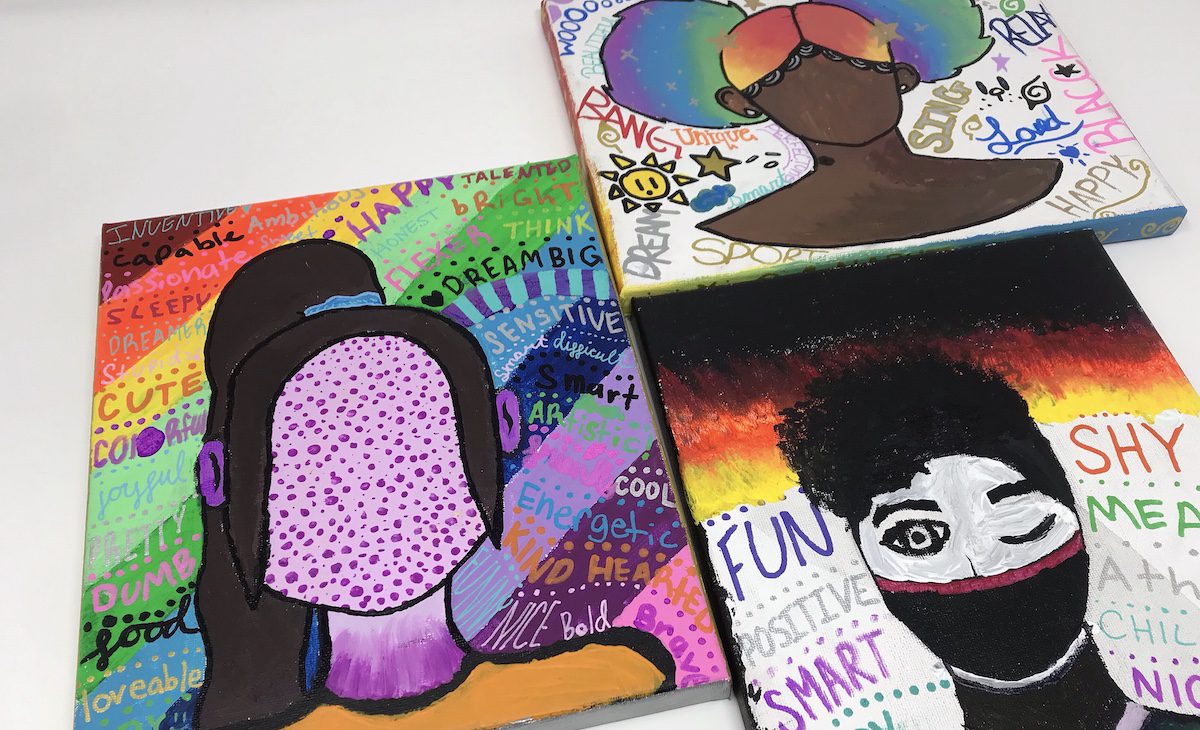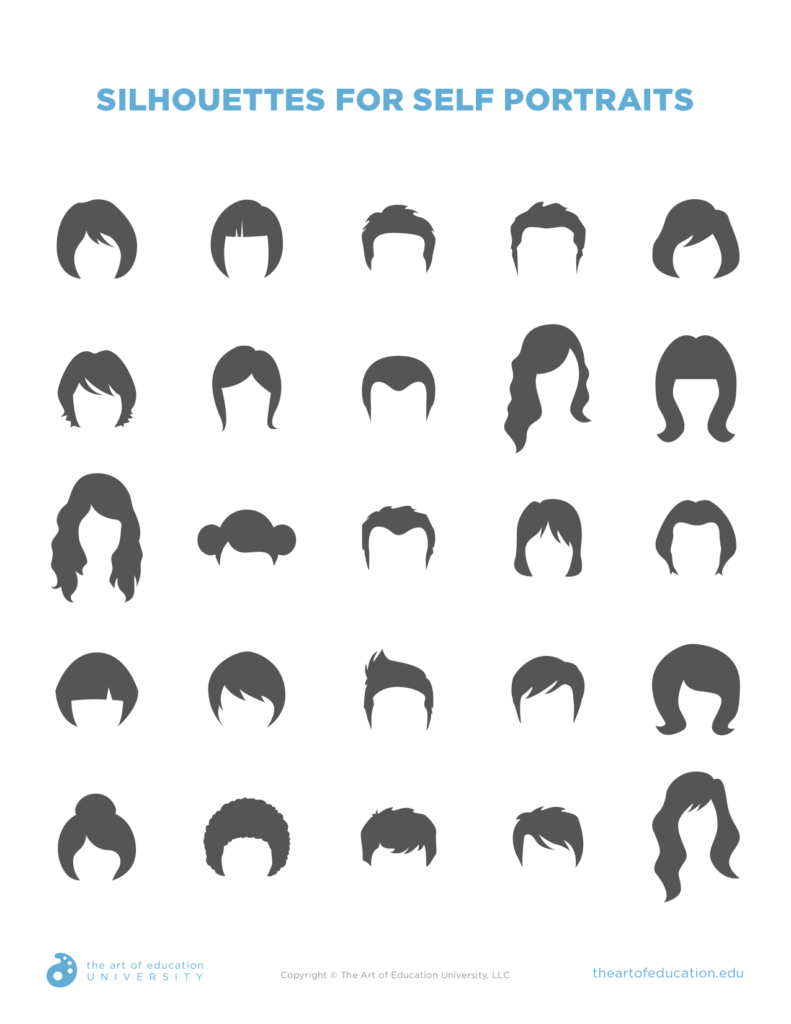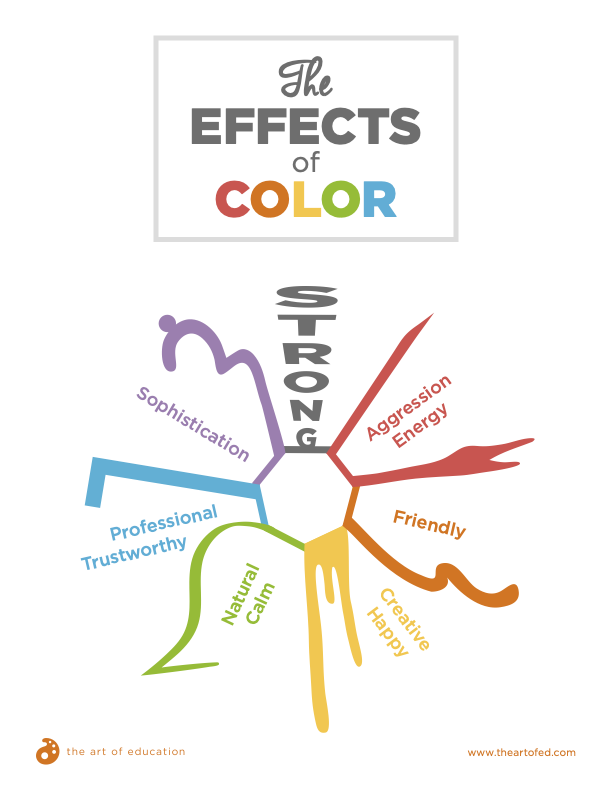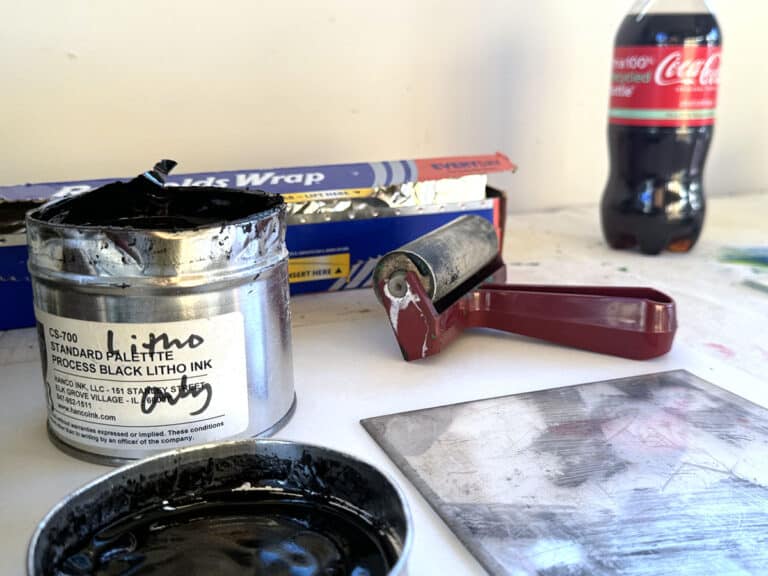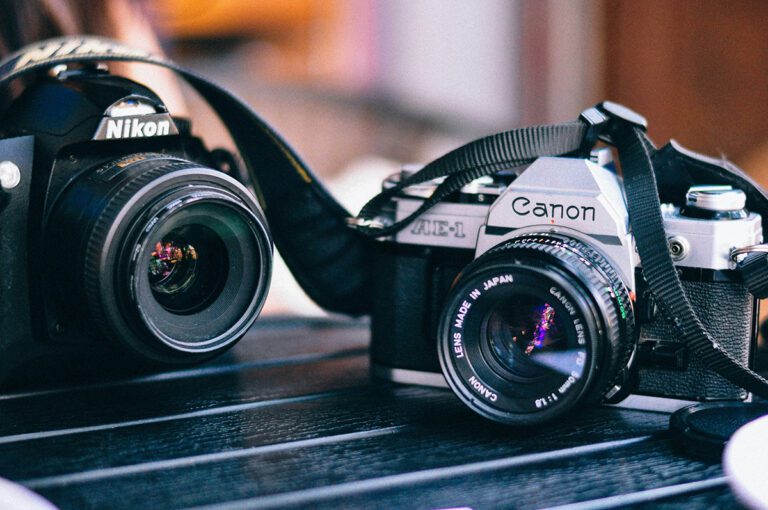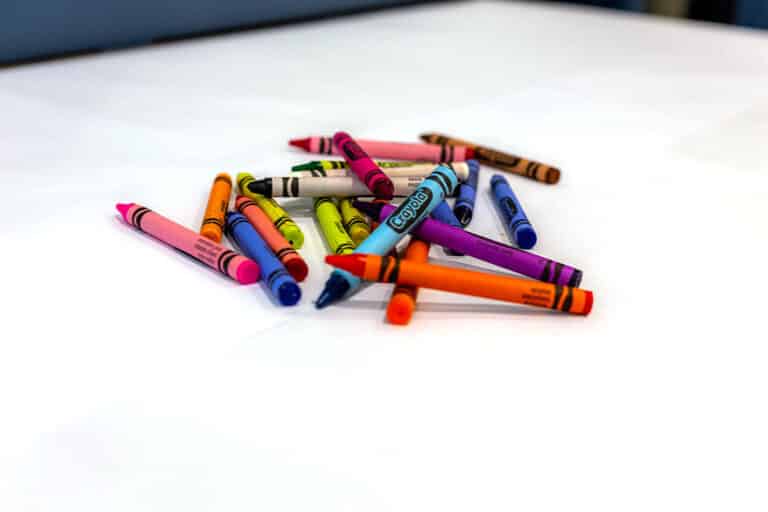The self-portrait has an extensive history dating back to ancient Greek, Roman, and Egyptian civilizations. It can be seen throughout centuries and will probably never go away. Self-portraits continue to be a part of art curricula, but as our students get to certain ages and phases in their lives, creating a self-portrait can be a vulnerable experience.
The ability to create a self-portrait is meaningful but can intimidate students. If your students are reluctant to create an image of themselves, try out this self-portrait lesson. Dive into your students’ identities and how they can be their best selves!
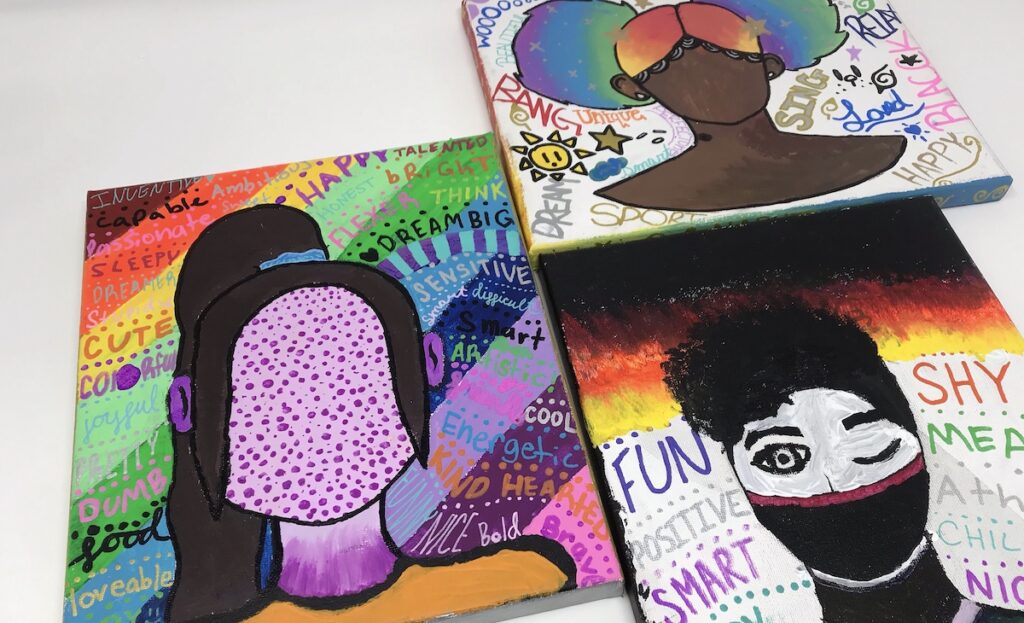
Why don’t our students like self-portraits?
As students begin reaching their secondary years, they become more self-conscious about their identity, appearance, and perception. Although traditional self-portrait work is important, sometimes our students need to start in a less intimidating way so they can explore who they are without judgment. The purpose of this lesson is not for students to focus on their physical features, but instead to show us the things we cannot see by looking. Follow the planning steps below to get your students started.
1. Brainstorm ideas.
To begin this lesson, allow your students to participate in an idea generation exercise. In a sketchbook, have students create a list of words that describe them that do not focus on physical features, but instead tell us who they are. From here, encourage your students to think of positive words or phrases that describe them. Use this list of 200 words to guide your students. Encourage your students to start developing imagery with the descriptive words so they can determine how they will incorporate them into their final artwork.
2. Begin the artwork.
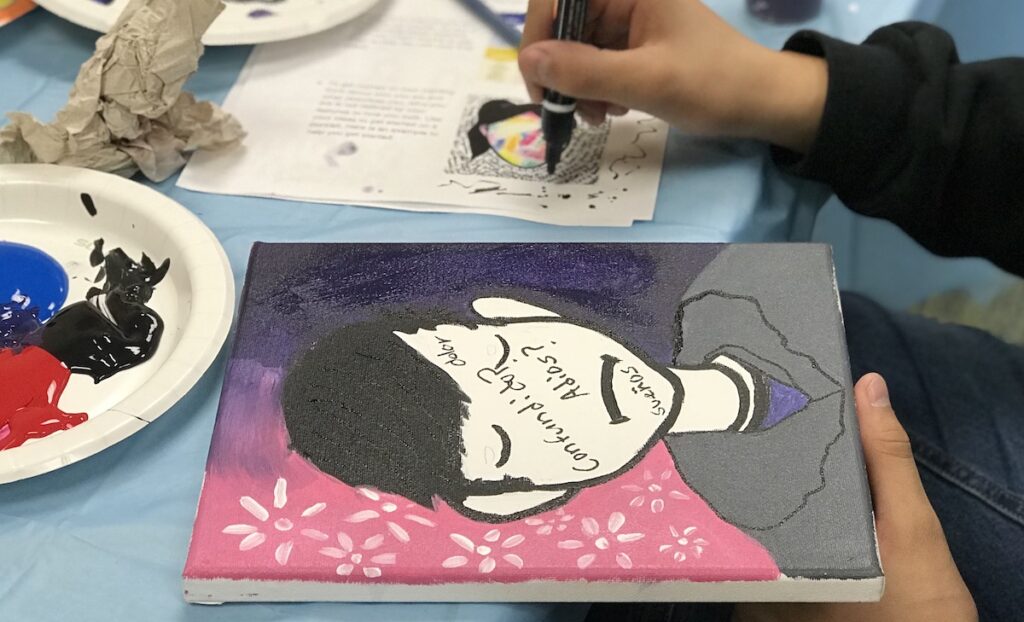
This project can be done with any medium. However, a small canvas with acrylic paint is an excellent place to start. When students are using what they view as “real artist” materials, they take more ownership of the process. To begin, students will sketch an outline of themselves. Your students will take a variety of approaches to this step as they begin expressing who they are.
Use the download below of different face silhouettes to help get students started with their drawings.
3. Add details.
After the preliminary portrait is drawn, have students begin thinking about the objects and colors representative of them. Use this psychology of color handout to guide your students. Remind students realism is not an expectation; they can show who they are through symbolism. In this step, students should begin painting, or using their medium of choice, to start bringing their imagination to life.
Download Now!4. Encourage the use of text.
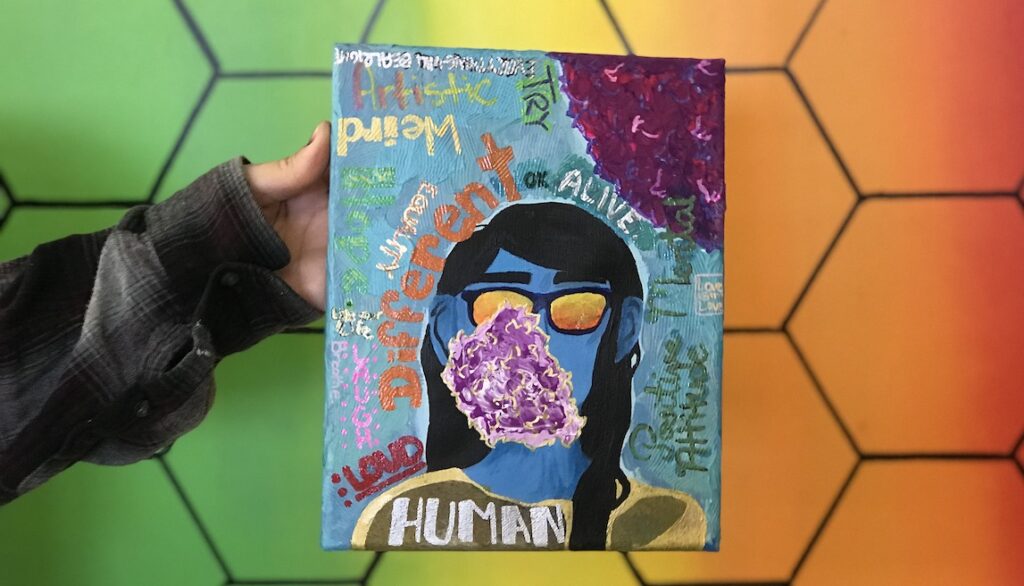
The use of language in art can be powerful. It can be expressive and a way for students to truly communicate their feelings and emotions. That is why encouraging your students to use text might be a good option. If your students will be adding text, allow them to explore using paint pens as they will be able to have more control in their work. To discuss the power words can have in art, check out these artists who incorporate text in their work.
5. Allow for reflection.
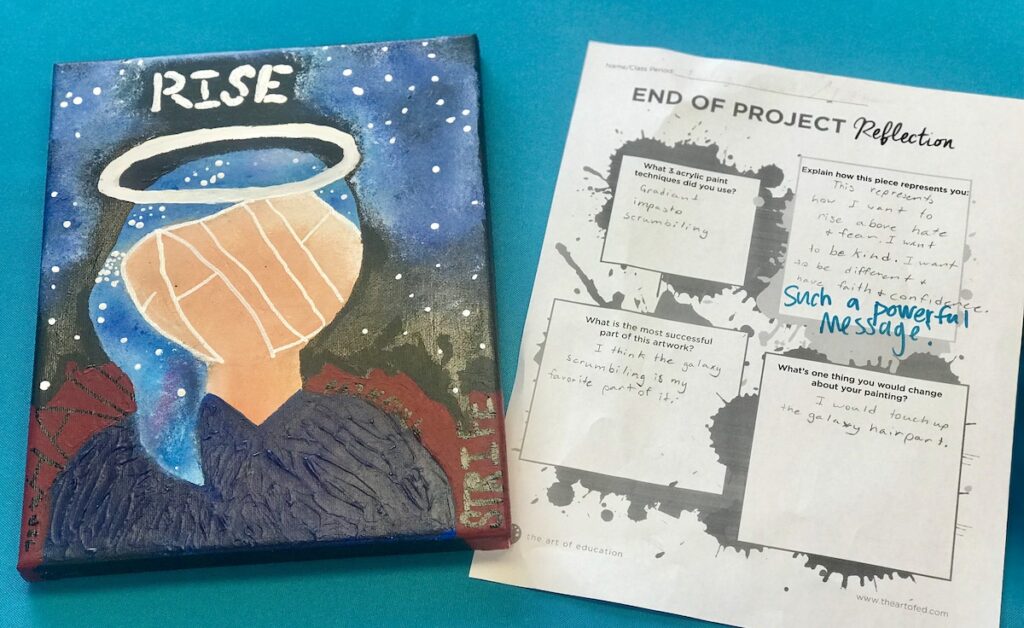
Reflection is a crucial part of the artmaking process, but we don’t always take the time to do it. When doing a project that forces students to look at who they are, it is important that they get the opportunity to reflect. Check out Peer Feedback Strategies PRO Pack found in PRO Learning to learn more.
Self-portraits don’t need to be scary or intimidating. We need to remind our students they are far more than their physical appearance. In a time where more of our students need our emotional and mental support, a lesson allowing them to see the positive attributes in themselves can be therapeutic and cathartic.
What is your favorite self-portrait lesson to teach?
Why do you think students are intimidated by the self-portrait?
Magazine articles and podcasts are opinions of professional education contributors and do not necessarily represent the position of the Art of Education University (AOEU) or its academic offerings. Contributors use terms in the way they are most often talked about in the scope of their educational experiences.
